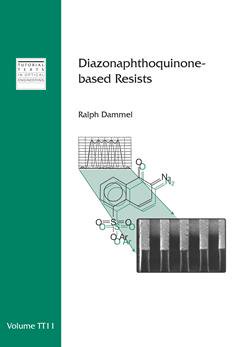
This will count as one of your downloads.
You will have access to both the presentation and article (if available).
Surface roughness investigation of 157- and 193-nm polymer platforms using different etch conditions
Synthesis and lithographic performance of highly branched polymers from hydroxyphenylmethylcarbinols
Photolithography is the technique underlying all integrated circuit manufacture. To a large extent, the minimum feature size and the performance of ICs is determined by the resolution achievable in this step. Also, the process yield has a strong impact on a Fab's economy. The troubleshooting of photoresist performance is therefore a key concern to every microlithography engineer. However, this requires a highly interdisciplinary understanding of many areas, from photochemistry to polymer science to optics, that are usually not taught in a unified way in most educational curricula. In this course, photoresist processing is examined by walking a wafer through the lithographic sequence, beginning with the wafer preparation and ending when the resist feature has been prepared for dry etching. Both classic near-UV DNQ/novolak resists as well as chemically amplified systems (248 and 193 nm as well as EUV) will be covered. The chemical changes occurring in photoresists during the different process steps will be discussed. Pitfalls and failure modes will be pointed out at every step and correlated to the underlying properties of the photoresist materials. The aim of the course is to give microlithography engineers a practical basis from which to begin the detective work involved in identifying the root cause of a processing problem.
The course covers the physics of aerial image generation, the chemistry that is responsible for generation of differential solubility in resists, and the effects of processing variables on the final relief image. While optical exposure is the major focus of this course, electron beam and x-ray exposure are also addressed, as is nanoimprint lithography. The physics section provides an explanation for interference effects and their influence on the aerial image together with a look at aspects of wave front engineering techniques such as phase shift mask design. The chemistry section provides an overview description of the chemical basis for various resist designs, including chemically amplified resists. There will also be a discussion of methods for pitch multiplication such as Self Aligned Double Patterning, DSA, etc. The course also includes a discussion of the influence of material and process variables on the tradeoffs between resolution, line edge roughness and throughput.
This course provides an overview of the chemistry that is responsible for generation of differential solubility in resists and the effects of processing variables on the final relief image. While optical exposure is the major focus of this course, electron beam and x-ray exposure are also addressed. The course provides an overview description of the chemical basis for various resist designs, ranging from the older DNQ/novolak resists to chemically amplified resists for 248nm, 194 nm dry and immersion, and EUV. It provides a discussion of methods for pitch multiplication such as Multiple Patterning, Self Aligned Patterning, DSA, etc. The course also includes a discussion of the influence of material and process variables on the tradeoffs between resolution, line edge roughness and throughput.
This course reviews the present status of 193-nm photoresist technology at a time when it has seen successful production implementation and is moving into immersion technology. It describes the initial technical hurdles that had to be overcome to make 193 nm photoresists viable materials, describes the currently used platforms for dry lithography, and goes on to review the remaining issues still being resolved in the transition to immersion lithography with water and high refractive index liquids. The course will include a review of the status of the design and performance of 193 nm photoresists and processes for dry and immersion lithography. It will highlight the remaining issues that will need to be addressed for successful extension of 193 nm lithography, such as limitations of overlapping process windows, line edge roughness, PEB sensitivity, substrate interactions, dry etching capability, pattern collapse, and defectivity (dry and immersion), and the availability of materials required for extension beyond the 45 nm node. These topics will be discussed from both a mechanistic point of view as well as with respect to their impact on production implementation.
Antireflective bottom coats are important for lithography engineers to enhance the performance of the lithographic process. This course discusses the physical basis of antireflection, including the derivation of optimal conditions for top and bottom antireflective layers. Fresnel and Airy formulae for the reflection amplitude can be related to the swing ratio by Brunner's equation. The performance enhancements of organic and inorganic coatings can reduce the swing ratio to a fraction of its original value, remove reflective notching and standing waves, increase the exposure latitude and final resolution of photoresists, remove the need for substrate priming, improve adhesion and insulate the resist from potentially contaminating substrates. A guide to the particular type of antireflective coating suited to what process is provided.
Diazonaphthoquinone (DNQ)/novolak resist systems make up most of the present photoresist market. This course examines the success of these materials by studying the correlation between their chemistry and their lithographic performance. The basic chemistry of both DNQ sensitizers and novolak resins will be explored. The historical development of DNQ chemistry by Oskar Suess in the 1940s, recent theories about the impact of resin secondary structure, and photosensitizer design is presented. The dissolution inhibition effect by percolation theory is explained. The chemical changes occurring in photoresists during processing are studied by walking a wafer through the lithographic sequence. The course continues with advanced processing, and reflectivity control, then concludes with a look at the future of DNQ resists in microlithography.
View contact details
No SPIE Account? Create one


